Why a Durham beef finisher is adding Wagyu places
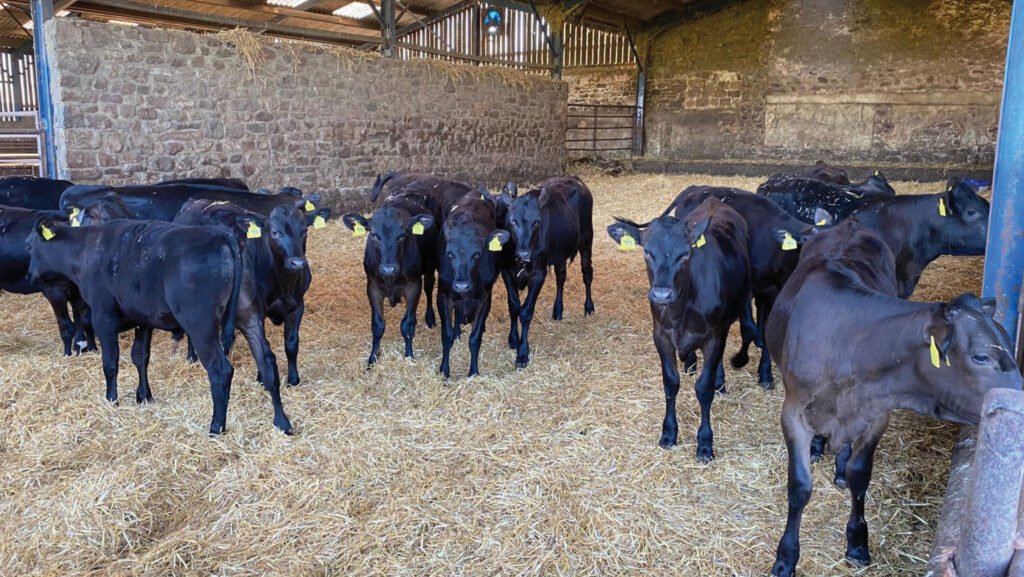 © Luke Medd
© Luke Medd A Durham farming family is erecting a new shed to expand its Wagyu-cross beef enterprise by 30%.
The Medd family hopes to lift cattle capacity to about 650 head by this time next year on their beef and arable farm near Barnard Castle.
The three-generation partnership of Brian, son Alan and grandson Luke currently finishes 30 Wagyu-crosses a month at West Whorley Farm, with Luke ambitiously targeting an eventual doubling of this number.
See also: Virtual Wagyu sale hits 13,000gns for cow and calf
Farm Facts: N Medd and Son, West Whorley Farm, Barnard Castle
- Running two farms, four miles apart
- 248ha, half rented, half owned
- Half grass, half arable
- 500 Wagyu-cross cattle
- Finishing 30 cattle a month
- 400 commercial ewes
Changes
Historically, Alan bought 200 black-and-white bull calves to finish each year and ran a herd of 100 continental-cross suckler cows, selling store cattle.
But this setup proved volatile at the time, so in 2018, he experimented with 50 Wagyu-crosses from Warrendale Wagyu and steadily dispersed the cows to make room for more of the premium crossbreds.
“I like the stability the arrangement offers,” explains Alan. “We know what to expect, as prices are agreed in advance, meaning we can budget.”
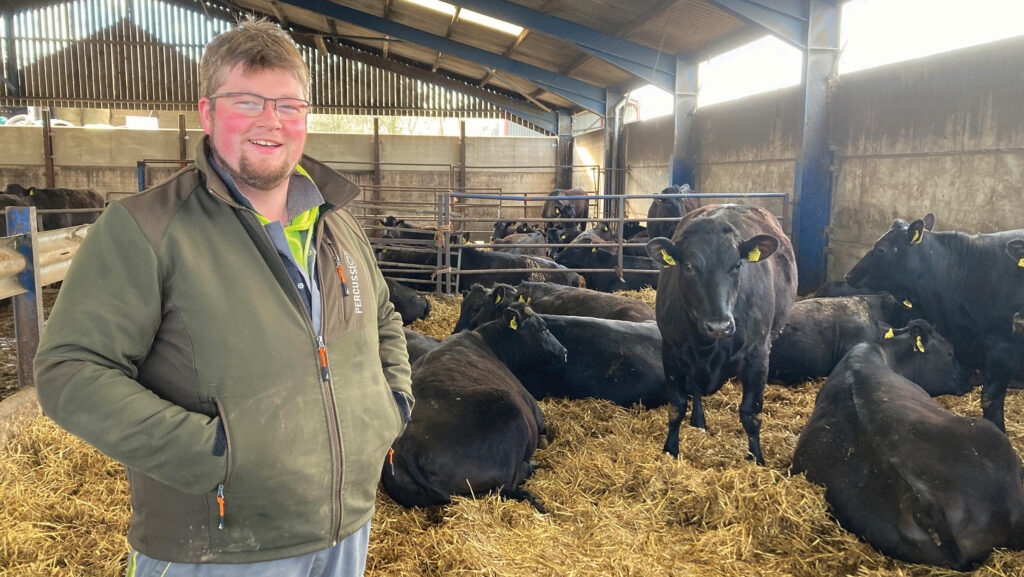
Luke Medd © MAG/Michael Priestley
Split site
West Whorley is the original home farm, and the tenancy on Low Park Wall, four miles away – where Brian farms – was taken on in 1992.
It is home to the sheep flock, spring crops and 120 of the Wagyu-cross cattle through the year.
All cattle start and finish at West Whorley (see “The Medds’ beef system”).
Cattle are swapped between the two sites twice a year using the farm’s cattle trailer, which can move 15-24 head depending on size, as well as taking 100 or more prime lambs to Darlington Farmers Auction Mart.
Premium
While prices are a closely guarded secret by Warrendale Wagyu, the Medds say the longer finishing time the cattle need to ensure the superior marbling of the breed’s meat is covered by a premium (see “How the contract works”).
Finishing age was 24 months – to ensure sufficient marbling – but has recently dropped to 22 months.
Cereal and forage use
The farm used to sell about 700t of feed wheat and barley to local farms for livestock feed, but this fell to 200t in 2023 as the family’s growing cattle enterprise required more feed.
Straw is bought from local blackgrass-free farms to supplement home-grown straw to bed wintering and finishing cattle.
The high-starch diet the Wagyu crosses require can be cost-effectively provided by home-grown crimped grain and maize silage.
This is fed through a Keenan feeder wagon as a total mixed ration (TMR) to all housed cattle every other day. A calf diet, a grower diet and a finishing diet are made.
The only feedstuffs bought in for the TMR are spey syrup, which adds moisture, driving intakes, and minerals. A protein balancer is bought for younger stock.
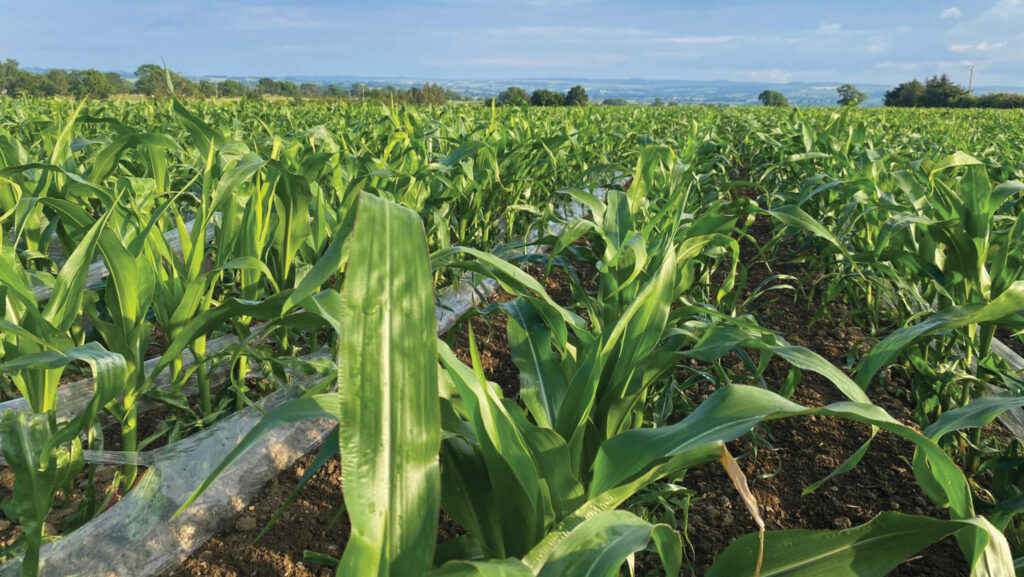
Maize is grown through film © Luke Medd
The early-maturing maize variety P7034 is grown under film, owing to the farm’s northerly location.
This allows time for a following crop of winter wheat to be established. Maize has so far surpassed budgets of 50t/ha freshweight.
Infrastructure
The existing loose housing, previously used for suckler cows, has been ideal for wintering and finishing cattle.
A new shed measuring 49×15.5m, with a 1.82m upturned cantilever feed cover (to shelter feed and allow more room underneath for tractor and forage wagon), has been added this year, which will house 150 finishing cattle loose on straw.
There are two silage clamps at West Whorley and a third (10x30m) will be added this summer. Low Park Wall has one clamp.
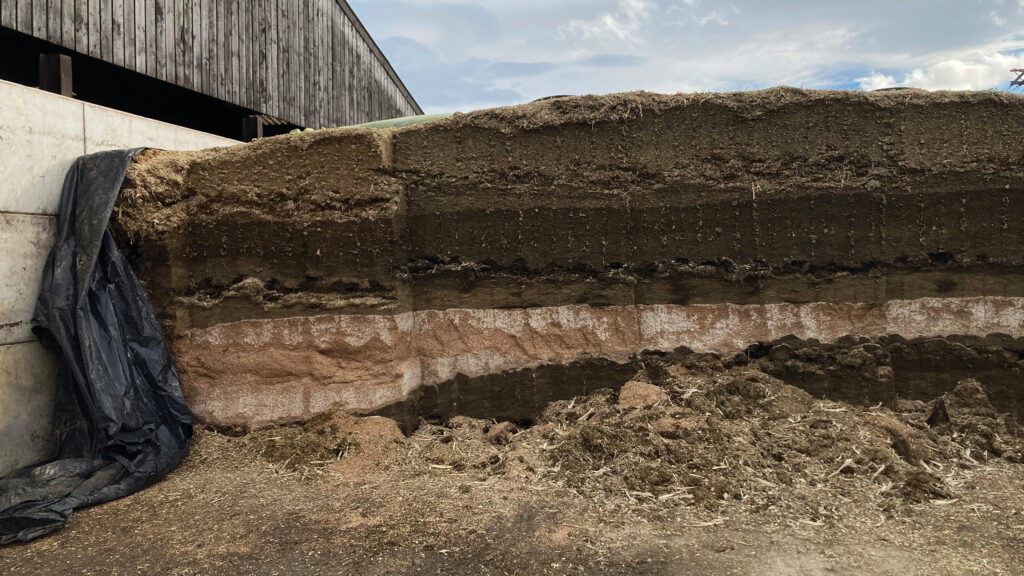
© MAG/Michael Priestley
Rotation
The Medds have reduced ploughing to about 30% of ground by using min-till cultivations and a combination drill.
Always looking to experiment with new crops, Luke says his aim is to prevent bare soil by growing diverse crops, and to grow triticale for home use instead of second wheats.
He explains that it has lower cost, is more resilient to take-all and produces better grain and straw for the cattle.
Some 16 crops are currently grown on the farm: maize and grass for silage; cereal and forage rye; triticale; winter and spring wheat; winter and spring barley; winter oilseed rape; mixed crops of spring oats, peas, and beans; wholecrop triticale and lupins; and stubble turnips for wintering ewes.
Forage rye is a recent addition and has been grown ahead of maize. It will be wholecropped in April as a green crop.
“We have some silty soils, and they don’t react well to being left bare over winter. They can produce a hard cap on top,” says Luke.
Triticale and lupins wholecrop is fed to growing cattle and can be taken in mid-July.
This allows stubble turnips to be drilled for the sheep six weeks earlier, producing larger bulbs and beating the flea beetle migration in late summer.
The Medds’ beef system
The system works as follows:
Youngstock
Calves are given DNA and bovine viral diarrhoea testing tags and their first pneumonia vaccination on the dairy units where they are born.
They receive their pneumonia booster on the rearer farm, and arrive at the Medds’ farm aged 4.5-5 months, weighing 200kg, having been fed on a controlled feeding system (Advantage Feeder, which relies on saliva production for stock to lick feed off a metal plate).
To ease transition, they are housed and the Medds feed the same 18% calf rearer nut through the same system, to control the amount of creep being fed, for three to four weeks.
They then switch to a 17% protein blend fed through the feeder and a forage TMR to grow frame.
Grazing
Set stocking is currently used, but Luke is investigating subdivision of paddocks to grow more grass with rotational grazing.
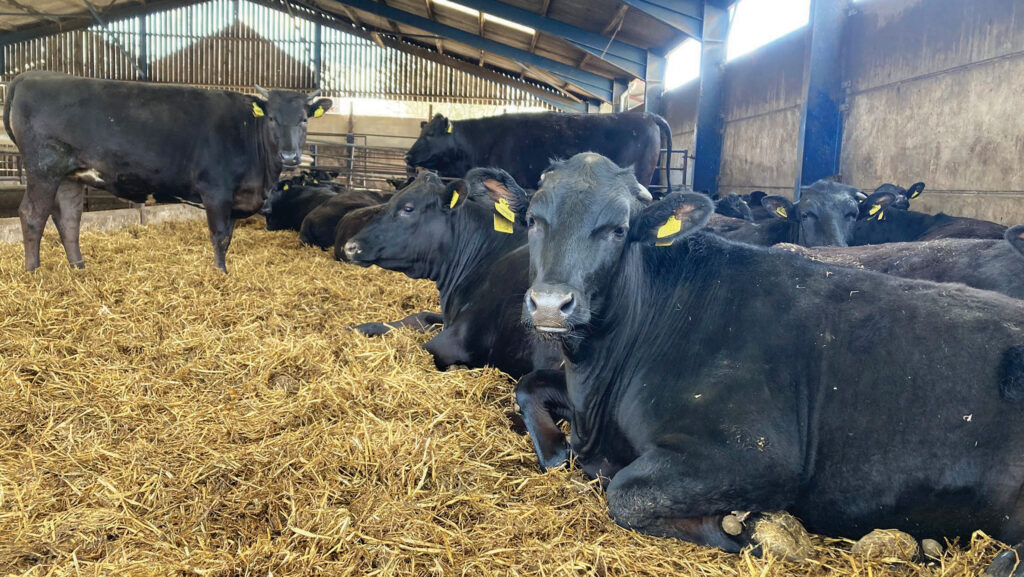
The large shed at West Whorley © MAG/Michael Priestley
Growing
Every animal has a summer at grass, which is supplemented with the Advantage Feeder, a garlic bucket (used to minimise fly issues) and a vitamin and trace element lick. Once transitioned off cake inside, the cattle are on a total mixed ration of 17% crude protein.
Finishing
Starch is increased when cattle are 10-12 months old by lifting the amount of crimped grain and maize in the diet, depending on how the forages analyse.
When the minimum finishing age was 24 months, cattle were finished at 680-720kg liveweight, with cattle gaining about 0.91kg/day while with the Medds.
Cattle are usually on the finishing diet at 15-16 months of age.
How the Warrendale contract works
- Breed All cattle are by Wagyu sires via artificial insemination, typically out of Holstein-Friesian dairy cows. These are known as F1 (first-cross) Wagyu
- Ownership The Medds buy the cattle from Warrendale Wagyu under a contractual agreement to sell the cattle back at an underwritten price when they reach a minimum slaughter age (currently 22 months)
- Payment A base price is pre-agreed, with additional marbling score bonuses (on a 0-10 scale). The Medds get most cattle finished at a marbling score 7 or 8 and can experiment with starch levels to increase marbling.
